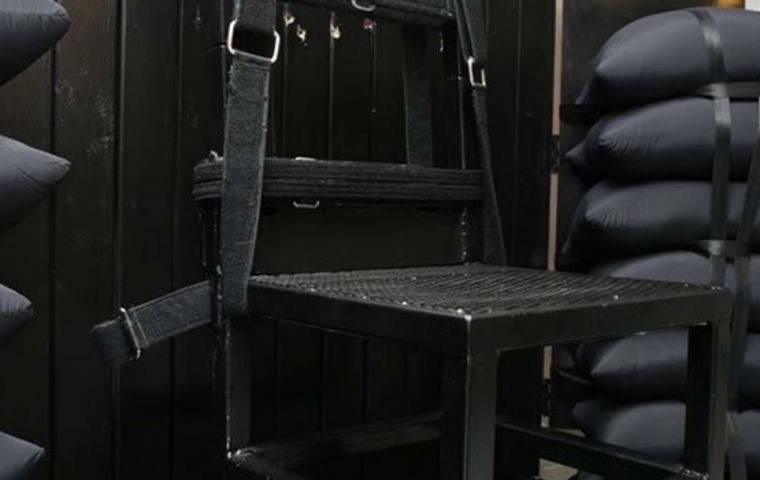MercoPress. South Atlantic News Agency
Execution by firing squad in South Carolina carried out
 Three members of the victims' family were allowed to witness the proceedings
Three members of the victims' family were allowed to witness the proceedings South Carolina inmate Brad Keith Sigmon was executed by firing squad Friday for the 2001 murders of his ex-girlfriend's parents, marking the fourth time this method was used in the United States since the reintroduction of the death penalty and the first outside the State of Utah.
Sigmon chose to die this way instead of by lethal injection or in the electric chair, citing concerns about the effectiveness and humanity of those proceedings. In his final statement, he expressed love, apologized, and denounced the death penalty using biblical references. The execution followed strict protocols, with three volunteers firing live ammunition from 15 feet away.
Firing squads usually include a blank cartridge, also known as a “conscience round,” to ease shooters' psychological burden. But this was not the case Friday when all three executioners were volunteer staffers from South Carolina's Department of Corrections, Spokeswoman Chrysti Shain told CNN. Each of the executioners fired once from their rifles using .308a Winchester TAP Urban bullets. The bullet provides rapid expansion and fragmentation, Shain added.
Unlike South Carolina, Utah uses a five-member firing squad with .30-caliber rifles loaded with two rounds. The five shooters are more than 20 to 20 feet away from the prisoner. One of the rifles is loaded with blanks. The inclusion of a shooter with blank ammo theoretically provides for plausible deniability about having fired a fatal shot. However, the effectiveness of this psychological trick is dubious because anyone who has fired a rifle can reportedly tell the difference.
Sigmon's execution occurred shortly after the scheduled time, at 6.08 pm local time (23:08 GMT) at Broad River Correctional Institution in Columbia. Three members of the victims' family were allowed to witness the proceedings. After the shots, a doctor performed an examination that lasted about 90 seconds before pronouncing the inmate dead. “Nowhere does God in the New Testament give man the authority to kill another man,” Sigmon said in a statement through his lawyers. He wore his prison-provided uniform and was secured to a chair inside the execution chamber.
“Unless he chose lethal injection or firing squad, he would die in the old South Carolina electric chair, which would burn and cook him alive. But the alternative is just as monstrous,” Gerald “Bo” King, one of Sigmon's attorneys, said in a press release earlier this week.
Since the reinstatement of the death penalty in the United States in 1976, following the Supreme Court’s decision in Gregg v. Georgia, execution by firing squad has been rare, with only four cases recorded, all previous three in Utah: Gary Mark Gilmore (Jan. 17, 1977); John Albert Taylor (Jan. 26, 1996); and Ronnie Lee Gardner (June 18, 2010). Utah has been the historical center for this method due to its legal provisions and cultural history—early Mormon settlers viewed blood atonement (spilling blood for certain sins) as a theological concept. No other states have carried out firing squad executions since 1976, though Idaho, Mississippi, and Oklahoma have also authorized the method as a backup in recent years.
(See also: South Carolina to perform rare firing squad execution )




Top Comments
Disclaimer & comment rulesCommenting for this story is now closed.
If you have a Facebook account, become a fan and comment on our Facebook Page!